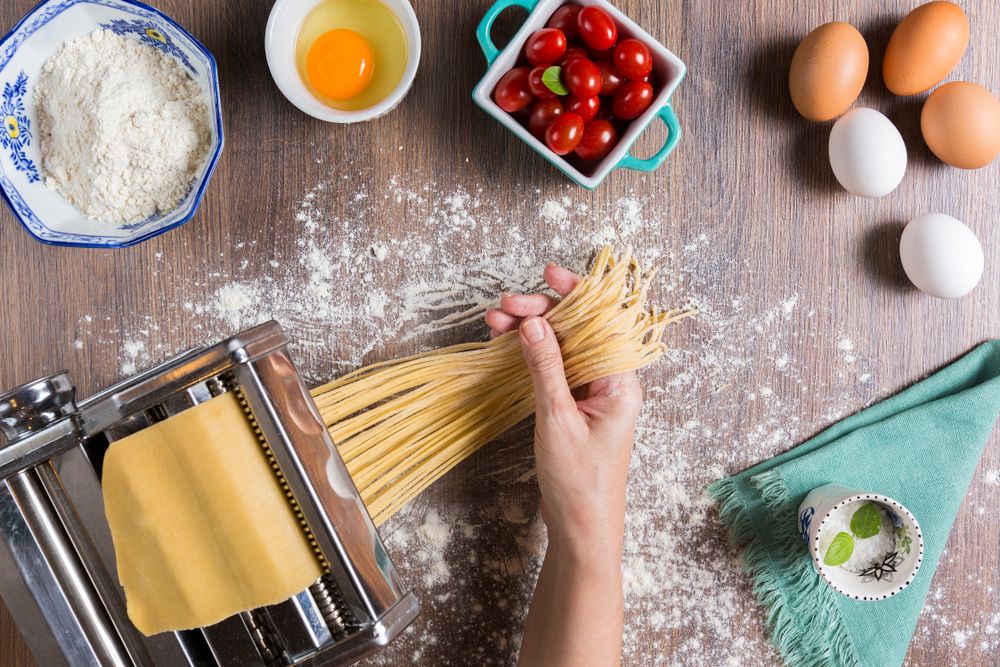There’s something uniquely satisfying about making pasta from scratch — the texture, the flavor, and the ability to customize every ingredient. While it’s possible to roll and cut pasta by hand, a good pasta maker can take your homemade creations to the next level, offering consistency, speed, and versatility.
Whether you’re a beginner trying your hand at fresh fettuccine or an experienced home cook ready to master ravioli and tagliatelle, choosing the right pasta maker can dramatically improve your kitchen experience. This guide breaks down the essential factors to help you find the perfect machine for your pasta-making goals.
1. Understand the Types of Pasta Makers
There are two main categories of pasta makers: manual (hand-crank) and electric (motorized or fully automatic). The best choice depends on how often you cook pasta, your available space, and how hands-on you want the process to be.
Manual Pasta Makers
-
Classic design with a hand crank.
-
Rollers and cutters are typically made of stainless steel.
-
Ideal for traditionalists who enjoy a tactile experience.
-
More affordable, durable, and compact.
Electric Pasta Makers
-
Either motorized versions of manual machines or fully automated extruders.
-
Great for making pasta quickly and with less physical effort.
-
Can include digital controls, automatic kneading, and multiple shape dies.
-
Higher price point and require more counter space.
If you value tradition and don’t mind a bit of effort, a manual pasta maker is perfect. If you want convenience and speed, an electric model may be worth the investment.
2. Consider Your Skill Level and Frequency of Use
How often you plan to make pasta — and your experience level — can influence the best type of pasta maker for your needs.
Occasional User or Beginner:
-
Look for a reliable manual machine with basic settings.
-
Start with a model that makes sheet pasta, fettuccine, and spaghetti.
-
Simpler machines are easier to learn and maintain.
Frequent Cook or Enthusiast:
-
Consider a motorized roller or fully automatic extruder.
-
Choose a machine with multiple cutting attachments or shape dies.
-
Look for models with kneading functions to streamline the process.
Matching the machine to your cooking habits ensures you’ll actually use it regularly — not just store it in a cabinet.
3. Evaluate the Build Quality and Materials
Durability is essential, especially for a tool that handles dense dough and frequent pressure. The materials used impact the machine’s lifespan and ease of cleaning.
Key Considerations:
-
Stainless Steel Body and Rollers: Long-lasting, rust-resistant, and easy to clean.
-
Metal Gears: More durable than plastic parts inside the housing.
-
Stable Base or Clamp: Prevents sliding during use (important for manual models).
-
Easy Crank or Motor Operation: Should feel smooth without too much resistance.
Avoid machines with flimsy plastic components or weak attachments — these tend to wear out or break over time.
4. Look at Pasta Shape Options and Attachments
Some pasta makers are designed only for rolling and cutting sheets, while others can make a wide variety of shapes with the right add-ons.
Common Attachments or Accessories:
-
Fettuccine and Spaghetti Cutters (standard on most manual models).
-
Ravioli Molds or attachments for filled pasta.
-
Angel Hair, Pappardelle, and Lasagna Noodles.
-
Pasta Extruder Dies for penne, rigatoni, macaroni, etc. (available on electric models).
-
Motor Attachments for manual machines (can be purchased later).
Check whether attachments are included or sold separately, and ensure compatibility with your base machine if upgrading in the future.
5. Choose the Right Thickness Settings
Rolling pasta dough to the right thickness is critical for texture and cook time. Most pasta machines include adjustable rollers with several settings.
Ideal Features:
-
6 to 9 thickness levels (0.5mm–3mm range).
-
Easy-to-use knobs or dials for switching settings.
-
Consistent, even rolling for smooth pasta sheets.
More settings give you greater control — especially helpful for experimenting with different pasta types or stuffed pasta like ravioli.
6. Consider Cleaning and Maintenance
Pasta makers come into direct contact with raw dough, so cleaning is important. But because they’re not dishwasher-safe, ease of manual cleaning is key.
Cleaning Tips:
-
Choose a model with non-stick or chrome-plated rollers.
-
Avoid using water — instead, brush off excess flour and dough.
-
Disassemble parts when possible for deeper cleaning.
-
Keep brushes or cleaning tools on hand for tight spaces.
Some models include built-in brushes or cleaning accessories to simplify upkeep — a helpful feature for regular users.
7. Match the Machine to Your Kitchen Space
Size and portability matter, especially in smaller kitchens. Manual models take up less space and are often easier to store, while electric versions require permanent counter space.
Space Considerations:
-
Manual Machines: Compact, often under 5 lbs; easy to store in a drawer or cabinet.
-
Electric Machines: Larger footprint and heavier; ideal for dedicated countertop use.
-
Check for folding designs or detachable components if storage space is limited.
If you have a dedicated baking or prep station, a larger machine won’t be an issue. Otherwise, opt for something compact and manageable.
8. Know Your Budget
Pasta makers span a wide price range depending on type, brand, and included features.
Price Guide:
-
$30–$60: Entry-level manual pasta rollers with basic cutters.
-
$70–$150: Mid-range manual machines with attachments or motor upgrades.
-
$150–$300+: Electric and automatic pasta makers with kneading and extrusion.
If you’re just starting out, a quality manual model is a cost-effective way to learn the basics. As your skills grow, you can invest in motor attachments or higher-end electric units.
9. Check Brand Reputation and Warranty
When it comes to pasta makers, brand reputation can tell you a lot about performance, customer support, and long-term satisfaction.
Trusted Brands:
-
Marcato: Italian-made manual machines with excellent craftsmanship.
-
Imperia: Classic models known for durability and simplicity.
-
KitchenAid: Offers pasta attachments for its stand mixers.
-
Philips: Leading electric pasta makers with automatic features.
-
CucinaPro, Hamilton Beach, and Weston: Popular in the mid-range category.
Also, review warranty terms — many reliable models come with at least a 1-year warranty, while premium brands offer extended protection.
10. Think About Future Use and Expansion
Even if you only plan to make basic pasta now, your interest (and skill) may grow over time. Choosing a machine with optional attachments or upgrade paths can be a smart long-term choice.
Future-Proof Features:
-
Compatibility with additional cutters or dies.
-
Motor upgrade kits for manual models.
-
Extruder machines with swappable shaping disks.
-
Easy part replacement if something wears out.
A pasta maker that grows with you ensures you get the most value from your investment.



